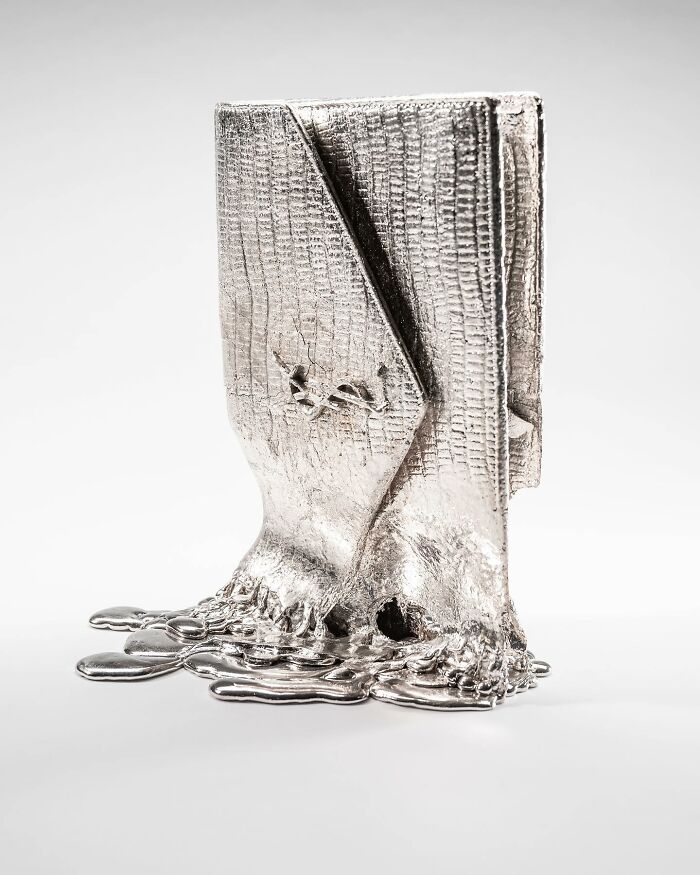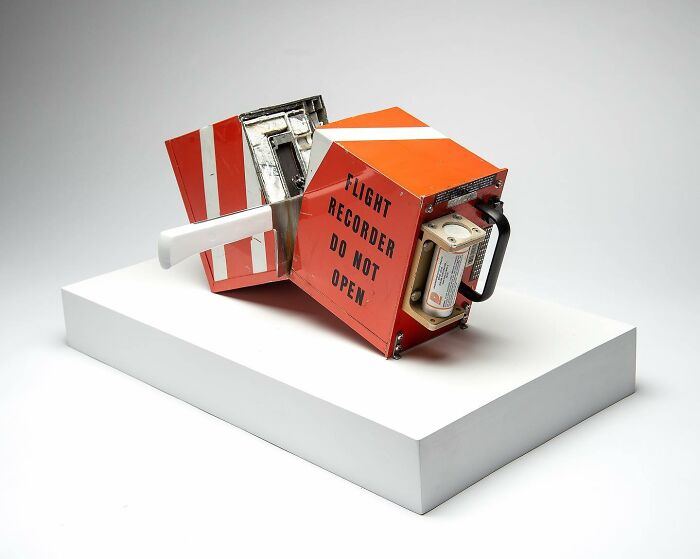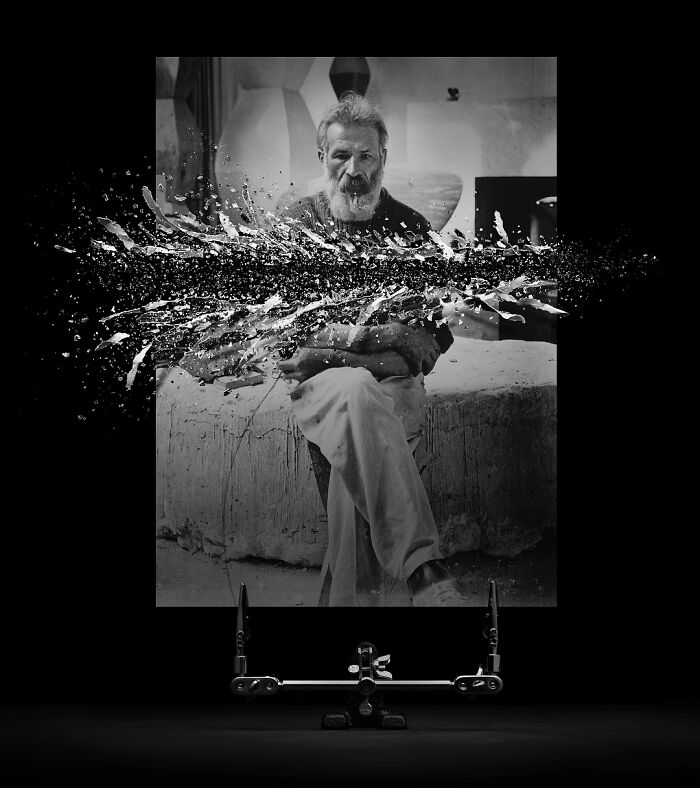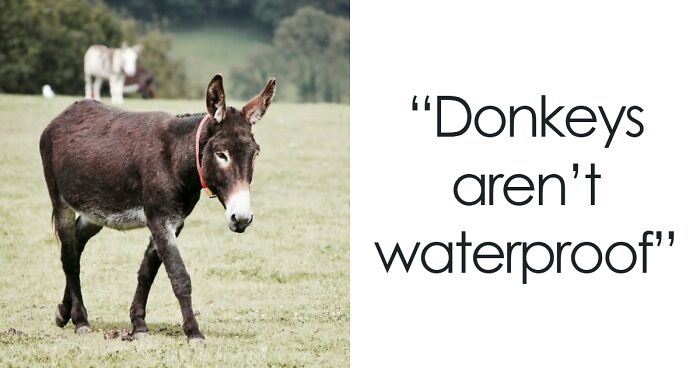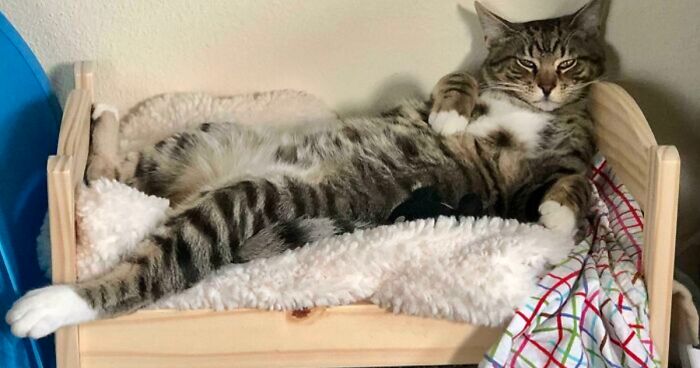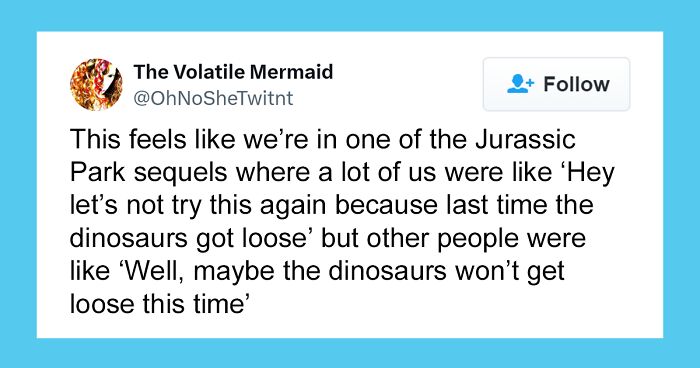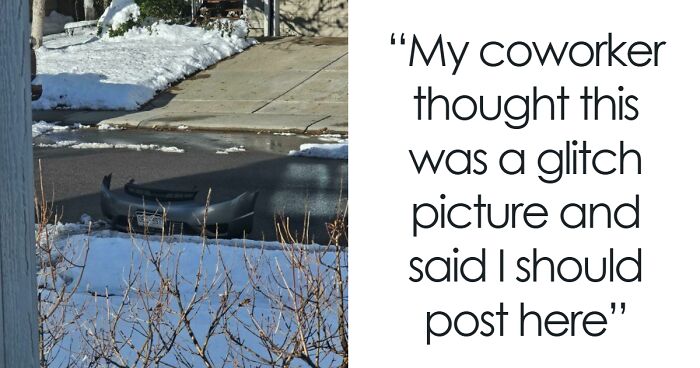
39 Totally Unique Pieces From An Artist Who Transforms Everyday Objects Into Works Of Art
Interview With ArtistI have always been curious about the mysterious connection between time, space, and reality and there’s no other artist who explores it in such a creative and always intriguing way as Fabian Oefner from Switzerland.
From capturing life moments that are invisible to the human eye, to slicing everyday objects and putting them into the resin ‘pages’, or showing iconic classic sports cars exploding apart, the artist is constantly looking for new unique ways that would attain a deeper understanding of the world around us.
More info: Fabian Oefner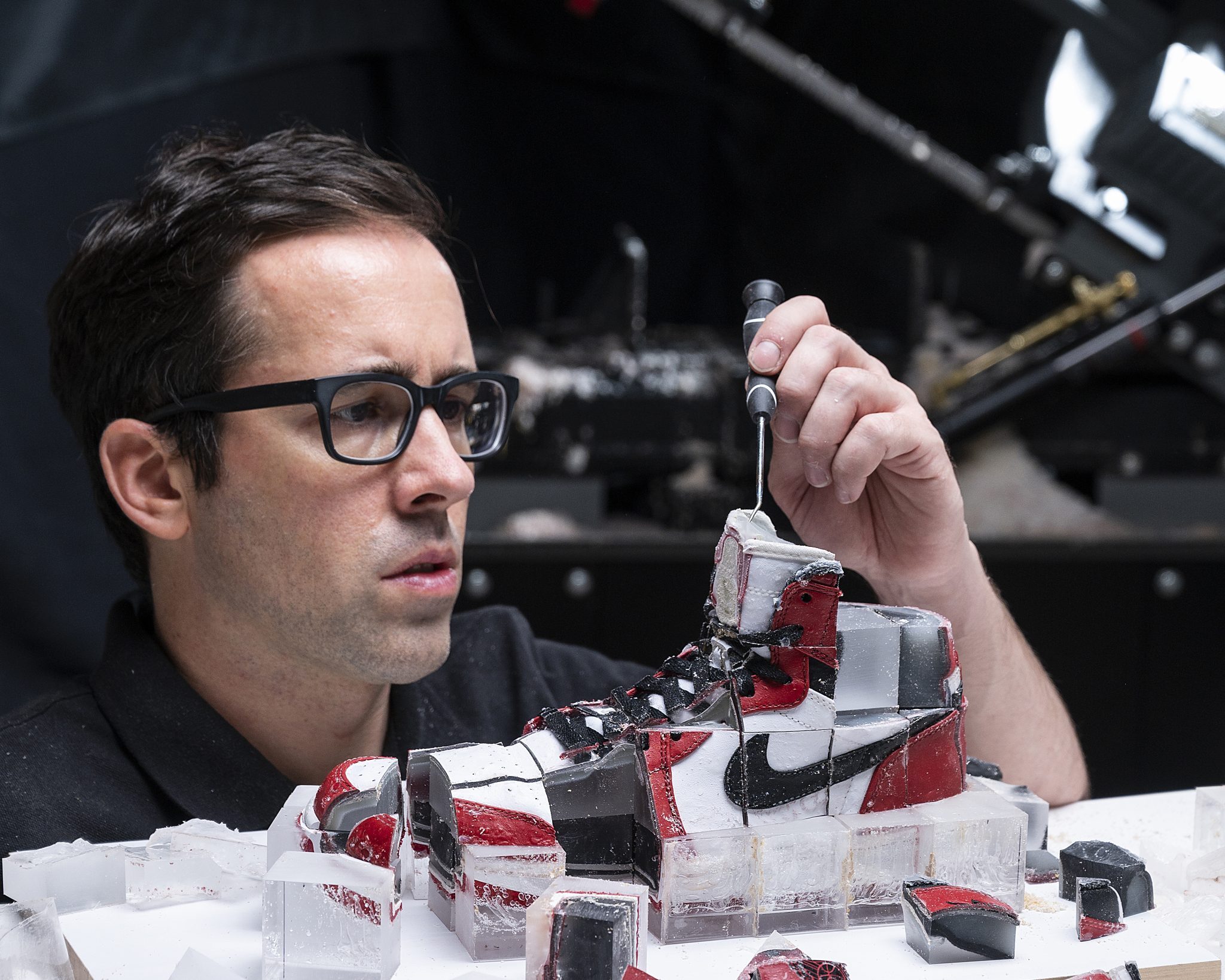
This post may include affiliate links.
With the Kintsugi Pots series, the artist is exploring the Japanese art of repairing broken pottery and applying it to non-ceramic objects.
The artist cut a Nikon into 11 segments and rearranged them into a sculpture that looks like it's being dragged apart by centrifugal force.
Disintegrating Riva marks Fabian Oefner’s latest addition to his renowned Disintegrating Series. Oefner and his team photographed over 1800 individual components of an original Riva Aquarama at Bellini Nautica, situated along the serene shores of Italy’s Lago d’Iseo. This particular image depicts the split second when a 1963 Riva Aquarama, racing across crystal-clear blue waters, disintegrates at full throttle.
Fabian Oefner was born in Aarau, Switzerland in 1984. He studied painting, photography, typography and art history at the Basel University of Art and got a Bachelor of Arts in Product Design at the University of Applied Sciences and Arts in Northwestern Switzerland.
Back in 2013, he founded Studio Oefner and collaborating with such scientists as theoretical physicist Brian Greene, institutes like CERN and the Edgerton Center at MIT, Fabian created mesmerizing photographic series like “Black Hole”, “Big Bang” and “Infinite Moment in Time” - all of them helping us better understand the concept of time.
Always trying to find the collision between emotional and rational approaches to one’s surroundings, the artist has gotten attention from The Washington Post, National Geographic, Der Spiegel, Stern, Wired, BBC, and many others. In 2013, Fabian also gave a TED talk about his art and the process behind it.
The iconic Bialetti coffee maker was sliced into 11 sheets and bound into a book. It was part of a series that explored the transformation of three-dimensional objects into two dimensions.
Though it only has 11 pages, it weighs more than 25 pounds and in case you were wondering, the Bialetti Moka Pot had actual coffee in it.
The Heisenberg Car sculpture is part of the Heisenberg Series, a collection of objects that examines the relationship between viewer and sculpture. The Countach was encapsulated in resin and sliced into small strips. These were then rearranged in a way that transforms the car into a seemingly moving object.
A shape-shifting sculpture, which becomes more abstract the longer you play with it.
Studio Oefner is a very special place where Fabian harmoniously brings art and science together. Indoor tornados to study the motion of air, cutting through a Leica camera on an archaic band saw, or disassembling a real Lamborghini Aventador, bringing a hyperrealistic moment into existence that never was there, are only a few examples of extraordinary experiments made in his huge playground.
In 2019, Fabian was conducting a climate data experiment as part of Heartbeat of the Earth from the Google Arts & Culture Lab series. He was visualizing the retreat of Alpine glaciers in Switzerland. An equipped drone with powerful LED lights flew over the glaciers at nighttime and then by using Google Earth’s 3D feature to find the best angle for photographs on the glacier, the artist took long-exposure images for each glacial expansion of a certain year.
In the same year, Fabian also worked on the exploration of reality by transforming day-to-day objects like sneakers, cameras, and computers into phantasmagorical shapes that would challenge our usual understanding of these objects, altering our perception of reality.
The Milkmaid is quite literally one of my favorite paintings. I've seen it in person and this really is just some "artistic" hubris to blast through an image like this. I get that modern art asks questions and makes a viewer think perhaps in unexpected ways, but this really just feels adolescent and unimaginative. It's not Hockney's 1981 Artist Eye exhibition which really takes the paintings and puts them in a true reexamined place in the viewer's mind. this is just mayhem for mayhem's sake.
CutUp is an eclectic series of technical objects which were sliced, rearranged and distorted into a new form and then encapsulated in resin. In this series, the tool was transformed into a piece of art, revealing the hidden beauty underneath the surface.
The other series called Fragments showcases eight communication devices representing technological milestones of different eras including a model 500 telephone designed by the Bell Telephone company or a MacBook Pro designed by Apple.
Fabian cut the devices into small pieces and removed most of them before embedding all of them into resin. The remaining fragments were arranged in their original position within the object, so that the overall shape of the device would remain intact.
These series referred to an incomplete sentence that could be interpreted in so many different ways.
A can of Campbell's Soup was sliced into 12 perfect cubes, which created a sculpture with 2.98 million different combinations!
The Escape Velocity series is Photoshop for the real world. The artist translated digital tools like slicing or clipping into analog technologies using a band saw and a belt sander.
The other, no less stunning project was called Spatial Books: a collection of iconic objects embedded in resin and turned into impressive sculptural books.
In one of them, The Bialetti Book, the artist filled a Bialetti Moka espresso pot with actual coffee and embedded it all in resin.
“Usually, books depict an abstraction of reality, whether by describing something through words or images. This book eliminates that abstraction by reducing and showing the real object in its pages. It is an instantaneous information gain about the Moka pot through our eyes and touch, expressing an iconic design in a different mode,” Fabian explained.
“As you browse through the pages, you get a completely different look on these familiar objects. The result is an intensified sense of space, dimensions, materiality, and time,” he added.
A Twin Reflex Camera was sliced into 12 individual cubes. The cubes can be rearranged by the observer to create different variations of the sculpture. Thus the sculpture becomes a collaboration between the artist and the observer. ⠀
And for those who are curious, there is a total of 4.36 quadrillion different versions. Thats 4'370'000'000'000'000. ⠀
In 2019, Fabian visited towns in California that had been destroyed by wildfires. He came across an aluminum trailer, the sides of which had partially melted due to the intense heat. In the midst of all this heart-breaking devastation, the artist could not help but catch a glimpse of beauty in the object. That's how later he created The Icarus Series, a set of 6 sculptures which transformed design classics using nothing but the power of temperature and gravity.
One of his most recent works is called Escape Velocity where Fabian cuts everyday items such as a saxophone, computer, or sneaker in a way that makes them appear as if they are somehow magically pushed through the wall.
“The methods of my art are like Photoshop for the real world. I am reversing the process, translating digital tools like slicing or clipping into analog techniques of work,” Fabian shared.
“In an environment dominated by manipulated images and artificially created content, I really enjoy creating these objects that have a physical presence and are profoundly real, yet seem to come from a digital realm,” the artist added.
This was Lamborghini's first NFT called Space Time Memory. A set of five 600 Mio pixel Photographs of an Aventador Ultimae lifting off toward the stars. ⠀
Every part of this image is real. 1.500 car parts were photographed individually, Earth's curvature captured by sending a balloon with a camera into the stratosphere. Then carefully assembled into a hyperrealistic moment that never existed.
Asked about how Fabian started his artistic career, he said in an interview with Bored Panda that it all started early on in his childhood.
“I would crush toy cars in a vice to see how they come apart, build telescopes to observe the night sky, experiment with sound waves traveling through water,” Fabian recalled his memories.
“I was always very curious about my surroundings. Which led to me becoming an artist. Because I realized that through art I can explore all these different interests of mine,” he added.
The artist mentioned that one of the most challenging projects he’s currently working on is building an experiment to recreate the northern lights or aurora.
“I am following the plans of a Norwegian scientist, Kristian Birkeland, who did a lot of research to figure out why northern lights exist. He built a little chamber in which he could recreate the northern lights,” he explained. “We are currently in the process of rebuilding that chamber at the studio,” he added.
Fabian also added that he is currently experimenting with a new series that takes painting into the 3rd dimension, and you can see a little preview of this below.
This was the first Disintegrating photograph Fabian ever did - the 300 SLR Uhlenhaut Coupé.
Inspired by Salvador Dali’s theme of surrealism and a dream world that he referred to, Fabian’s extraordinary artworks are part of several public and private collections across the world today.
With his unique talent of merging scientific concepts with artistic expression, Fabian invites us to embrace the tiniest moments and the magic that happens around each and every one of us every day.
The images of this series are exploded views of iconic cars that Fabian has painstakingly created by deconstructing scale-models, photographing each component, piece by piece in a very specific position, to create the illusion of an exploding automobile.
What looks like a car falling apart is in fact a moment in time that has been created artificially by blending over 2,000 individual images together.
Detail of Disintegrating X: The cylinder head with the pistons, valves and camshafts. Can you see the production date of this particular engine?
In the field of quantum mechanics, there is a law which says that we cannot measure the position and the velocity of a particle at the same time. The more accurately we know one of these parameters, the less accurately we know the other.
When you look at the Heisenberg Objekt No. 03 from a distance, you can easily identify the object. However, if you start to get closer to observe its inner workings, the shape of the object starts to get distorted and vanishes completely. As an observer, you are never able to observe the object as a whole and its inner workings simultaneously. The more accurately you see one view, the less clearly you see the other.
The sculpture is an artistic equivalent of the Heisenberg uncertainty principle.⠀
For this photograph, Fabian used an image captured by the famous sculptor Constantin Brancusi. If you look closely, you can see the trigger wire for the camera, which he holds in his left hand.
The most beautiful aspect here is probably the tension that is created between his calm, almost absent look and the kinetic power of the print ripping apart.

 Dark Mode
Dark Mode 

 No fees, cancel anytime
No fees, cancel anytime 




















